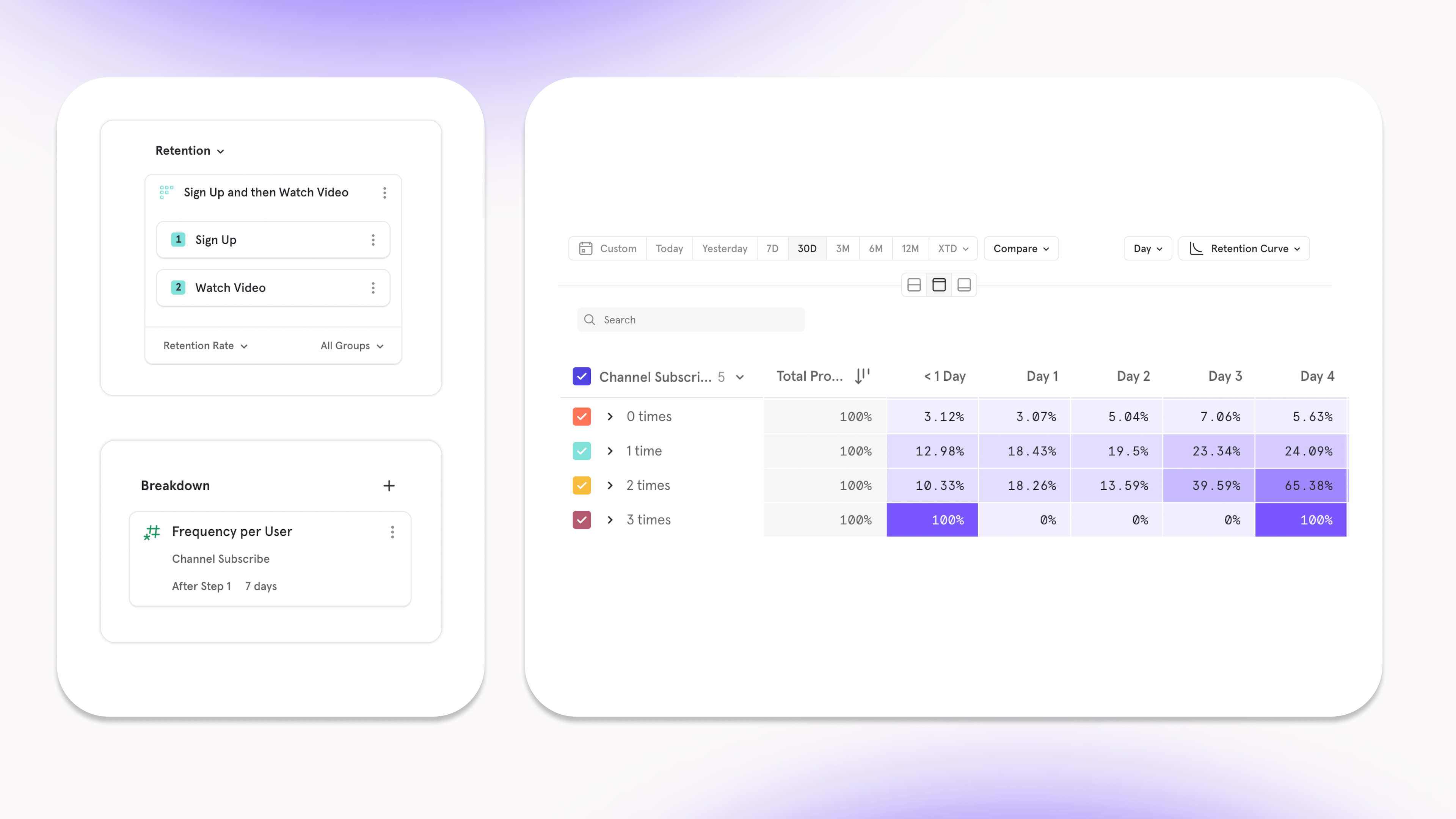Now in Retention, we’ve made it possible to breakdown users by what they do, not just who they are. This unlocks the ability to find the actions you can influence that will increase the long term retention of a user finding value. At its core, Behavioral Properties in Retention allows you to:
- Summarize user activity after the starting event, whether it is a count of events, or a summary of properties on those events.
- Set that summary of activity in a timeframe, for example, the number of times a user does the specified activity within 7 days / 1 hour / 30 minutes of the starting event.
- Uncover what activities within a certain timeframe correlate with the how often your users do the action you want them to do in the long term.
A powerful use case for Behavioral Properties in Retention is finding the “aha” moment in your product, which describes the actions a new user does after signup that lead them to become an active user of your product. A classic example is Facebook’s “aha” moment, which was “adding 10 friends within 7 days results in a huge jump in daily active usage”.
In our own example, you can dig into what actions a user does within 7 days after signup that lead them to watch more videos long term.
The result we find is that the more channels they subscribe to, the more likely they are to retain. This insight can drive a strategy to create an experience that prompts users to subscribe to popular channels when they first signup.

Was this page useful?